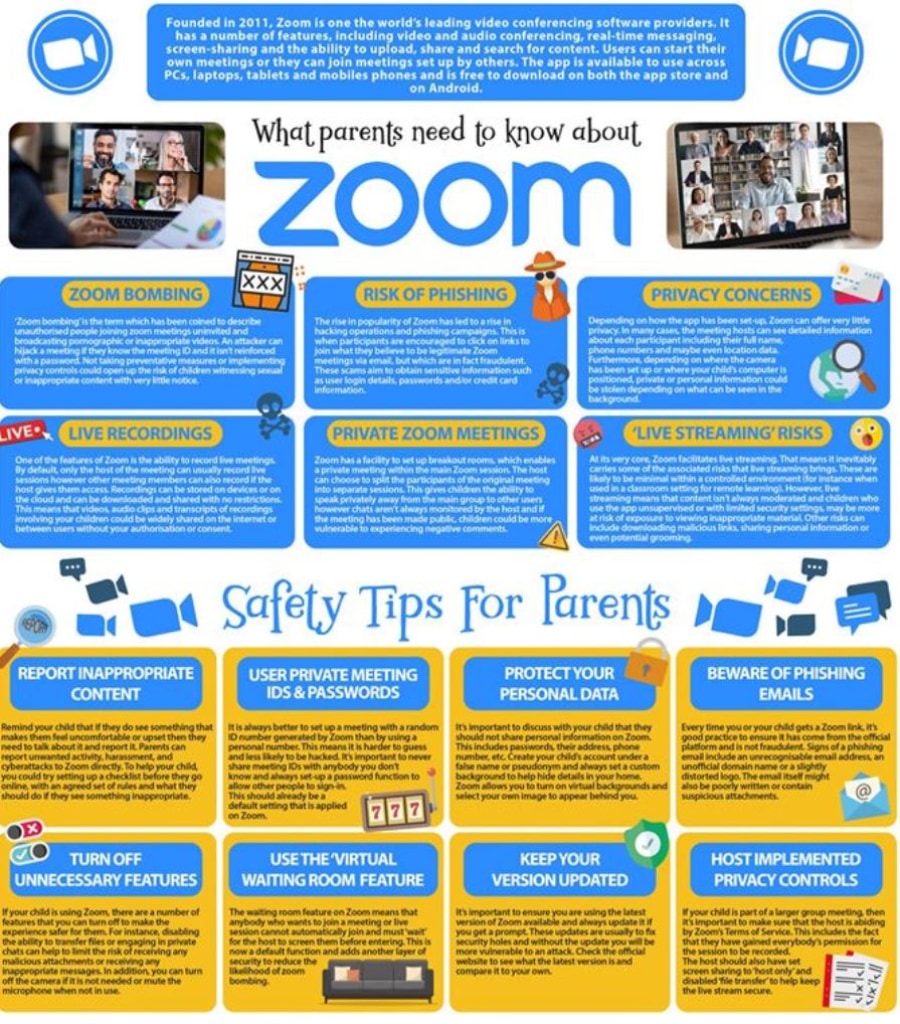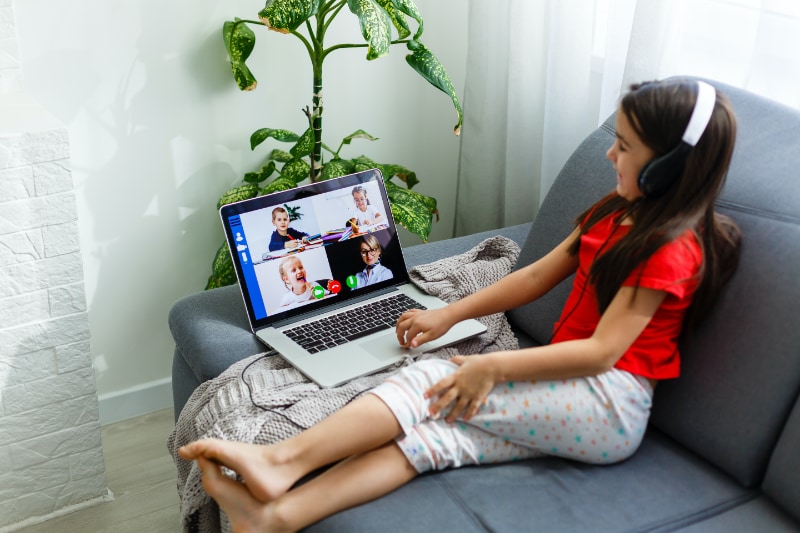Zoom has helped thousands of schools and teachers around the world to quickly shift to remote virtual learning. At SciGenie, we have also adopted online teaching and decide to use Zoom as a company.
I know Zoom has had a lot of negative publicity concerning people who were not authorized to go into the meeting. The reason for these incidents, they did not use the numerous security features designed to control online classrooms, prevent disruption, and teach the remote class effectively. Here are some best practices we use at SciGenie Online Classes that we want to share with you for securing a virtual safe & secure Zoom.

View and Download Parent Tip Sheet
Locking Virtual Classroom
Did you know you can lock a Zoom session that is already started, so that no one else can join? It is kind of like closing the classroom door after the bell. We give our students a couple of minutes to come into class and our teachers click Participants at the bottom of your Zoom window. In the Participants pop-up, click the button that says Lock Meeting.
Have Control of Screen Sharing
Sharing privileges are set to “Host Only,” so our teachers by default are the only ones who can share content in class. However, if students need to share their work with the group, you can allow screen sharing in the host controls. Click the arrow next to Share Screen and then Advanced Sharing Options. Under “Who can share?” choose “Only Host” and close the window. You can also change the default sharing option to All Participants in your Zoom settings.
Enable the Waiting Room
This is one of my favorite features of Zoom the Waiting Room. This feature is a great way of protecting your Zoom virtual classroom and keep out those who aren’t supposed to be there. When enabled, you have two options for who hits the Waiting Room before entering a class:
- All Participants will be sent to the virtual waiting area, where you can admit them individually or all at once. This is what we do at SciGenie!
- Guest Participants Only allows known students to skip the Waiting Room and join but sends anyone not signed in/part of your school into the virtual waiting area.
The virtual Waiting Room can be enabled for every class (in your settings) or for individual classes at the scheduling level.
Zoom has updated this feature on March 31st and Waiting Room will be automatically be turned on by default.
Lock Down the Chat
Kids will be kids and you will have one or two who might not be focusing on the class and writing the odd note. Our teachers restrict the in-class chat so students cannot privately message other students. We would prefer controlling chat access in your in-meeting toolbar controls (rather than disabling it altogether) so students can still interact with the teacher as needed.
Remove a Participant
If you notice someone not meant to be in your classroom or manages to join your virtual classroom, you can remove them from the Participants menu. Hover over their name, and the Remove option (among other options) will appear. Click to remove them from your virtual classroom, and they will not be allowed back in.
Security Options When Scheduling a Class
The cool thing about Zoom is that you have these other protection options at your fingertips when scheduling a class. Here are a few TIPS we do at our LIVE online class.
- Require registration: This shows you every email address of everyone who signed up to join our class and helps us evaluate who’s attending.
- Use a random meeting ID: It is best practice to generate a random meeting ID for your class, so it can’t be shared multiple times. This is the better alternative to using your Personal Meeting ID, which is not advised because it is basically an ongoing meeting that is always running.
- Allow only authenticated users to join: Checking this box means only members of your organization who are signed into their Zoom account can access this class.
- Disable join before host: Students cannot join class before the teacher joins and will see a pop-up that says, “The meeting is waiting for the host to join or have a Waiting Room
- Manage annotation: Our teachers disable participant annotation in the screen sharing controls to prevent students from annotating on a shared screen and disrupting class.
- Disable video: Turn off a student’s video to block distracting content or inappropriate gestures while class is in session.
- Mute students: Mute/unmute individual students or all of them at once. Mute Upon Entry (in your settings) is also available to keep the clamor at bay when everyone files in.
- Attendee on-hold: An alternative to removing a user, you can momentarily disable their audio/video connections. Click on the attendee’s video thumbnail and select Start Attendee On-Hold to activate.
We also recommend not sharing your zoom link on your social media. Get Zooming securely!




